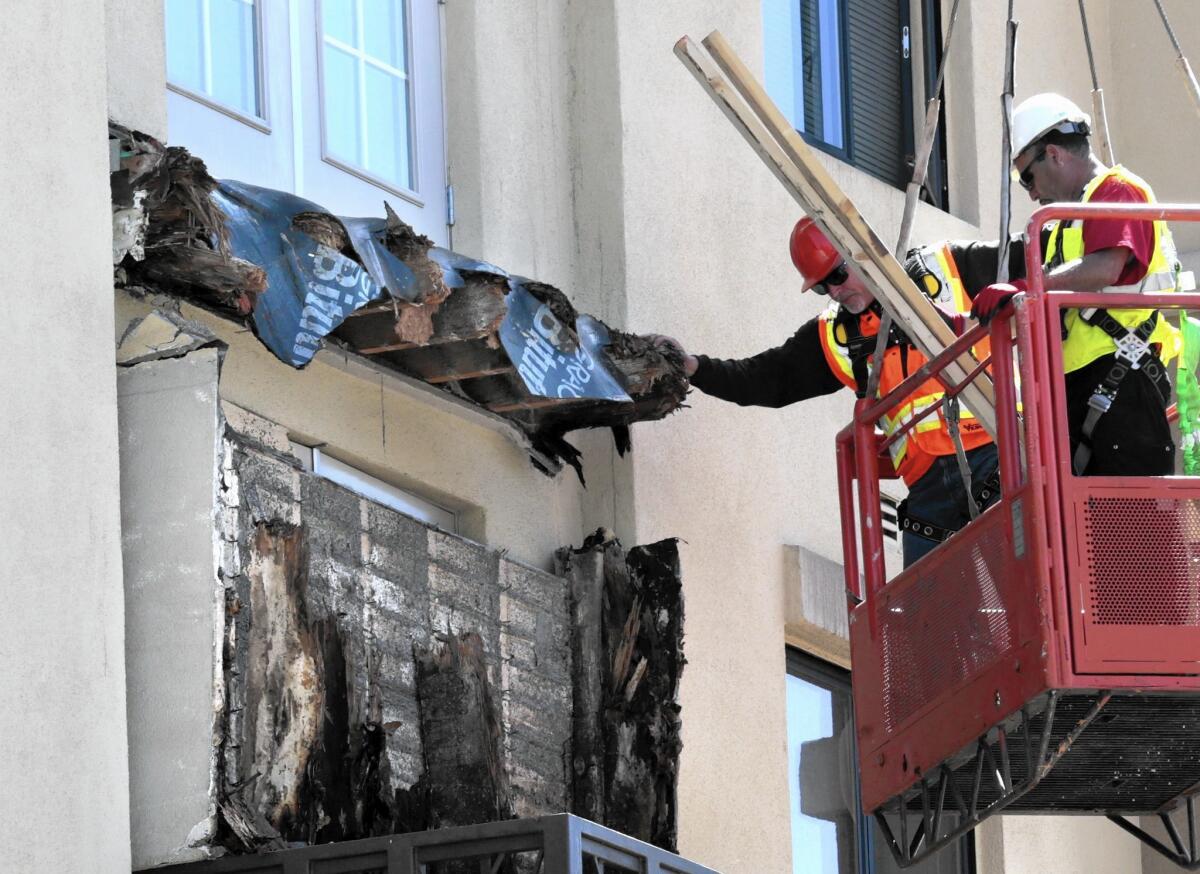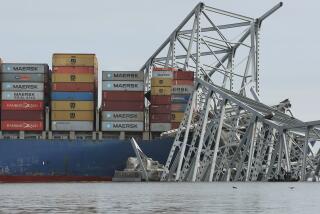Experts suspect poor waterproofing in Berkeley balcony collapse

Construction crews remove pieces of a balcony that collapsed in Berkeley, exposing what appears to be dry rot lumber. The collapse killed six people and injured seven a few blocks from UC Berkeley.
As officials investigate the sudden collapse of a Berkeley balcony last week that killed six and injured seven, outside experts say it’s obvious what happened: Water got into the balcony and didn’t get out, rotting the wood that kept it in place.
The big question is why.
Berkeley city officials gave no timeline for the release of findings on why the balcony collapsed. But outside experts examining architectural drawings and photographs of the fifth-floor balcony’s remnants say there are a number of issues on which investigators should focus.
“We would want to look at what the waterproofing system is on that balcony,” Taryn Williams, a civil and structural engineer in San Francisco who investigates structural and waterproofing failures, said in an interview last week. “We also want to look at if water does get in, is there a way for it to get out?”
Another question: Did the waterproofing on the deck — a thick layer of sticky asphalt topped with black plastic — have any gaps?
“Is it sealed? And how effectively is it sealed? And how many layers of redundancy are there within that seal?” Williams said.
Her employer, Simpson Gumpertz & Heger, was hired later to investigate the balcony’s collapse, and said she could not comment further. The firm declined to say who hired it.
Before the collapse, there should have been warning signs easily noticed by an inspector on a routine maintenance schedule, one expert said.
“Balconies just don’t fall off a building like what we saw without having a few years of deterioration,” said Bill Leys, a former deck waterproofing contractor who now inspects decks in San Luis Obispo for his company, DeckExpert.com.
“The common man or woman walking on a balcony might look at it and see a little crack and say, ‘No big deal,’ and in my mind, I say, ‘Oh, my God. How much damage is underneath?’ ” Leys said.
He said he was stunned to see an image of the collapsed balcony’s underbelly. The wooden support beams were so decayed along one edge they had mostly vanished.
Leys said the deck may have been built flat, instead of at a slight angle. “It has to have slope in it to shed water,” he said.
He also said the architectural plans he reviewed omitted an important layer in the deck — a plastic, dimpled “drain membrane” that puts a gap of air between the concrete deck surface and the waterproofing membrane layer covering the sheet of plywood on top of the wooden support beams.
Without a gap of air roughly 1/4- to 1/2-inch thick, water that is absorbed into the concrete gets stuck next to the waterproof layer. That would provide ideal conditions for dry rot fungus to grow.
Leys said he suspected that the waterproofing membrane had been punctured, allowing water to soak into the wood.
He said he has seen decks with “massive problems underneath” because water had seeped in through a small crack and gone unrepaired for years.
“But wood is cellulose. It’s a sponge. It soaks up water,” he said. “It is going to remain trapped there for some time.”
Finally, Leys said, balconies that have stucco surrounding them should have vents to air the wood out if they get wet. He didn’t see them in the design or in photos.
Given the massive water-intrusion present, “It probably still would’ve dry rotted, but at least it would have had a better chance,” he said.
Leys said there would have been ways to remedy the situation during construction. He said if he were confronted with a flat deck, he would have used a different technique that can add slope and also provide waterproofing.
Gene St. Onge, a civil and structural engineer in Oakland, said the situation underscores the importance of regular inspections to identify water-intrusion problems in roofs, balconies and decks before they get worse.
“There had to have been a lot of stains and warping to show that water is getting in there. If maintenance companies are doing their job, they should be going around and checking these things,” he said.
Twitter: @ronlin
Twitter: @lisagirion
Times staff writers Javier Panzar in Berkeley and Paige St. John in Sacramento contributed to this report.
More to Read
Sign up for Essential California
The most important California stories and recommendations in your inbox every morning.
You may occasionally receive promotional content from the Los Angeles Times.











